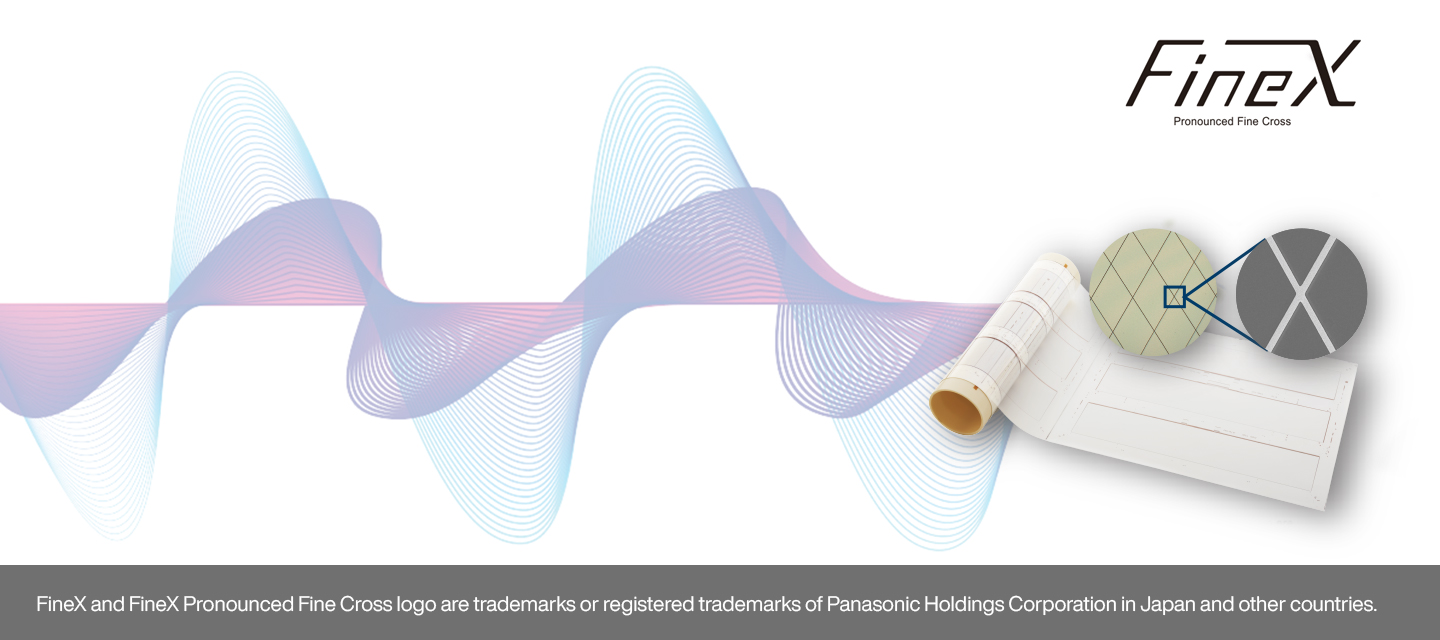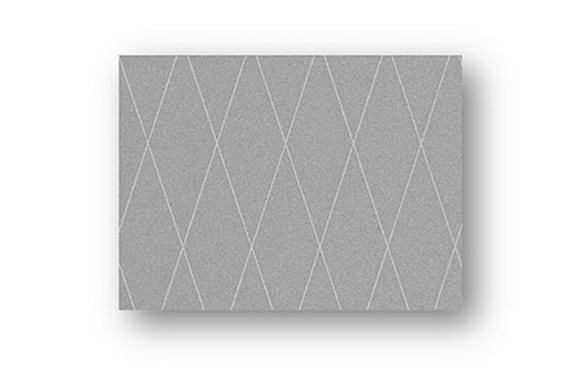
Transparent conductive film - FineX (Fine Cross)
Panasonic’s Transparent Conductive Film FineX (Fine Cross) is …

The metal mesh type transparent conductive film, which achieves both high transmissivity and low resistance, was developed using Panasonic's proprietary method.
Since it can conduct electricity in transparent areas where visible light transmission is required, the following can be achieved:
-
Generation of capacitance
-
Current flow to the device
-
Generation of heat
Fundamental specifications
| Item | Fundamental Specifications |
|---|---|
| Wiring Line Width | 2 um or more |
| Transmissivity | 89 % *1 |
| Aperture ratio | 96 % |
| Base material | PET / PC |
| Bendability | R2 mm or more *2 |
*1: Including film base material. *2: Film only.
| Items | FineX Panasonic’s proprietary Process Metal Mesh |
Conventional Etching Method Metal mesh |
|---|---|---|
| Visibility - Wiring Line Width | 4 um | ≦2 um |
| Transmissivity | 90.3% | 94.1% |
| Aperture ratio | 96 % | 92% |
| Sheet Resistance | 2 ohms/sq. | 2 ohms/sq. |
| Frame Wiring (L/S) | 15/15 um | 8/8 um |
| Base material | PET and COP | PET, PC and COP |
| Bendability | ≧ R2 mm | ≧ R2 mm |
Comparison with our prototypes: *1: Including film base material *2: Film only
Downloads
Flyer
| Name | Size | Date | Language |
|---|---|---|---|
| Flyer - Transparent Conductive Film FineX ( Fine Cross ) | 707 KB | 31.01.2025 | English |













